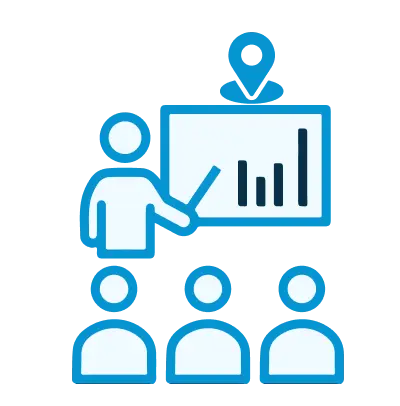Unable to find what you're searching for?
We're here to help you find itCertNexus CyberSAFE Course Overview

The CertNexus CyberSAFE course is designed to equip individuals with the essential knowledge to use technology safely in a professional environment. This cybersafe training aims to empower employees to identify and avoid cyber threats while ensuring compliance with security protocols. The curriculum is structured into three core modules:
Module 1 focuses on understanding Security compliance requirements and developing skills to recognize and prevent Social engineering attacks, including Phishing.
Module 2 delves into securing devices by maintaining physical security, managing passwords effectively, Protecting sensitive data, combating various malware, and Securing wireless devices.
Module 3 aims to teach learners how to navigate the internet securely, covering Safe web browsing, Secure email practices, Responsible use of social networking, and Secure utilization of cloud services.
By the end of the cybersafe training, participants will be well-versed in cybersecurity basics, enhancing their ability to protect themselves and their organization from cyber threats.
Purchase This Course
USD
View Fees Breakdown
| Course Fee | 750 |
|
Total Fees (with exam) |
750 (USD) |
USD
View Fees Breakdown
| Course Fee | 575 |
|
Total Fees (with exam) |
575 (USD) |
USD
View Fees Breakdown
| Flexi Video | 16,449 |
| Official E-coursebook | |
| Exam Voucher (optional) | |
| Hands-On-Labs2 | 4,159 |
| + GST 18% | 4,259 |
|
Total Fees (without exam & Labs) |
22,359 (INR) |
|
Total Fees (with exam & Labs) |
28,359 (INR) |
Select Time
Select Date
| Day | Time |
|---|---|
|
to
|
to |
♱ Excluding VAT/GST
You can request classroom training in any city on any date by Requesting More Information
♱ Excluding VAT/GST
You can request classroom training in any city on any date by Requesting More Information
To ensure the best possible learning experience and success in the CertNexus CyberSAFE course, participants should meet the following minimum prerequisites:
Please note that this course is tailored to individuals who use computers in their day-to-day life and are looking to enhance their understanding of cybersecurity practices. It is suitable for a wide range of participants, from employees who need to protect their company's data to individuals who want to ensure their personal information remains secure online.
The CertNexus CyberSAFE course equips individuals with vital cybersecurity awareness and best practices to protect digital assets.
The CertNexus CyberSAFE course equips individuals with essential skills to maintain cybersecurity and protect information in today’s interconnected environment.
Understand Security Compliance Requirements:
Recognize and Prevent Social Engineering Attacks:
Maintain Physical Security of Devices:
Implement Effective Password Practices:
Safeguard Sensitive Data:
Mitigate Malware Threats:
Secure Wireless Device Usage:
Navigate the Web with Enhanced Security Awareness:
Secure Email Communications:
Use Social Networking and Cloud Services with Caution:





